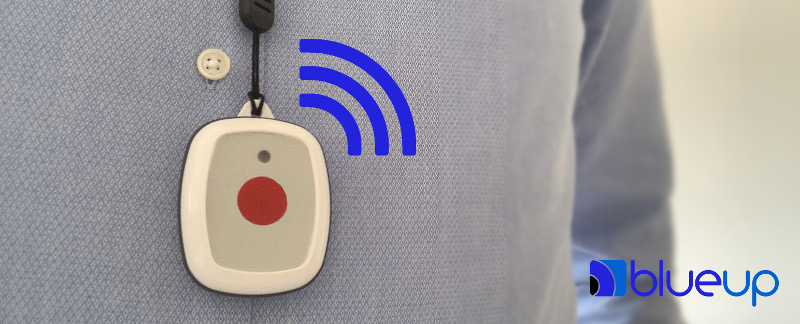
BlueUp launches SafeX Tracer, wearable BLE device for contact tracing
BlueUp launches SafeX Tracer, a wearable Bluetooth Low Energy (BLE) device designed as a technological aid to control the distance between operators and the tracing of contacts in the workplace for post-emergency management of the Covid-19 epidemic.
SafeX Tracer, when worn by an operator, is able to detect other nearby devices. When two or more operators approach each other, the devices emit an alarm signal (via LED, sound, vibration) increasing with the decrease of the distance, up to a continuous alarm when the estimated distance is less than about 1 meter.
All alarm events, including time stamp, are saved in the internal memory of the device, in order to be subsequently acquired in case of need, so as to have a mapping of the operator's contacts in the period prior to any diagnosis of Covid-19 infection.
SafeX Tracer does not need any physical infrastructure to operate (e.g. WiFi or BLE antennas, BLE beacon network, ...), minimizing the complexity and cost of the system. In fact, the device does not track the absolute positions of the operators in the workplace, but only their relative positions with respect to other operators, in case of reduced reciprocal distance. Furthermore, the archived data is completely anonymous, ensuring compliance with the privacy laws.

SafeX Tracer will be available in the following versions: SafeTag (to be inserted inside a pocket); SafeCord (to be worn around the neck with a cord); SafeClip (to be attached to a pocket or belt by clip). BlueUp will provide indications of use to maximize device detection accuracy.
In the following releases, additional optional functions will be added to the basic contact detection and tracing functions:
- integration with BlueBeacon Locate ZoneRTLS platform, for real-time location of operators;
- fall and man-down events detection;
- alarm signaling via push-button;
- integration with fixed beacons infrastructure based on iBeacon/Eddystone technology for proximity position data inclusion.
The possibility of integrating the Contact Detection Bluetooth specification, just promoted jointly by Apple and Google, for a contact-tracing BLE protocol for smartphones is also under study. In this way, SafeX Tracer could become a useful device even for population groups who do not have easy access to the use of smartphones (elderly, children, people with disabilities, etc...).
Those interested in getting more information on SafeX Tracer can contact us.
